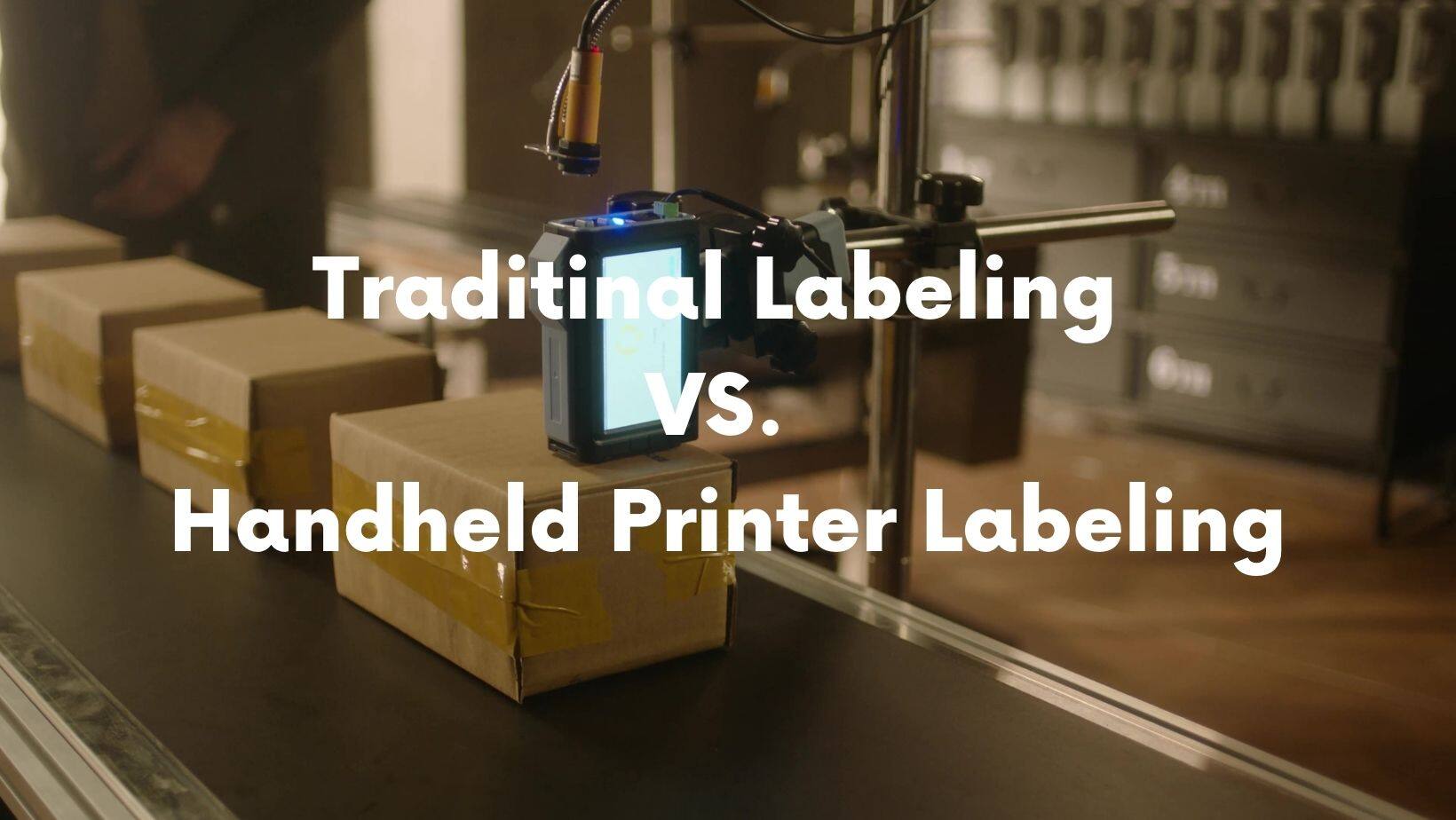Handheld Inkjet Printers vs. Traditional Labeling Methods: Pros and Cons Analysis

Label printing has undergone a transformation in recent years, with the technologies keep emerging, gone are the days where traditional labeling methods were the only option. The emergence of handheld inkjet printers has brought a new level of efficiency and cost-saving to the game.
In this blog, we'll go through the key differences between traditional labeling methods and handheld inkjet printers. We'll take a closer look at the downsides and advantages both labeling methods to help you make an informed decision. So, let's get started!
What Are Traditional Labeling Methods?
What are traditional labeling methods? Traditional labeling methods refer to the use of labels and stickers to provide product information. Labels are typically produced using direct thermal, thermal transfer, or pressure-sensitive adhesive (PSA) methods. These labels can be made of a variety of materials, including paper, vinyl, and polyester. Here's a closer look at their pros and cons.
Pros of Traditional Labeling Methods:
- High-Speed Printing: Industrial label printers can produce labels at high speeds, making them suitable for large-scale production environments.
- Durability: Labels printed using traditional methods are often more durable and resistant to environmental factors like moisture, heat, and chemicals.
- Consistency: Once set up, traditional labeling systems can consistently produce identical labels, ensuring brand consistency.
Cons of Traditional Labeling Methods:
- High Initial Costs: Traditional labeling systems typically require a significant upfront investment in hardware and consumables.
- Limited Mobility: These systems are fixed in one location, limiting their flexibility in a dynamic production environment.
- Material Costs: Pre-printed labels and ribbons add to ongoing material expenses, which can accumulate over time.
- Labor and Time Costs: For companies still use employees to manually place and align the labels, the traditional labeling method will be time-consuming and add extra labor costs.
Handheld Printer Labeling Methods
Handheld printers provide the unique capability of printing directly on a variety of substrates without using any labels or stickers. These printers are a relatively new entrant to the labeling scene, but they have quickly gained popularity due to their versatility and cost-effectiveness. Let's delve into the pros and cons of these portable labeling devices.
Pros of Handheld Printer Guns:
- Cost-Efficiency: Handheld printers are a cost-effective labeling solution. They eliminate the need for pre-printed labels, reducing ongoing material costs.
- Versatility: These devices can print on various surfaces, including cardboard, plastics, metals, and more, making them suitable for a wide range of applications.
- Mobility: Handheld printers are portable and easy to carry around, they can be used anywhere in your facility, providing flexibility in your labeling process.
- Quick Setup: Minimal installation and setup time means you can start labeling products or packages immediately.
Cons of Handheld Inkjet Printers:
- Printing Speed: While handheld inkjet printers are efficient for small to medium labeling tasks, they may not be as fast as industrial label printers for high-volume production.
- Ink Maintenance: Since most handheld printers use ink cartridges to create prints, when not in use for a while, the ink will get dry and clog the print head, leading to poor prints and interruption of work, which requires constantly maintenance and care.
- Ink Costs: Though the initial equipment investment could be less expensive compare to industrial level labeling systems, the expenses on ink cartridges for handheld printers are not cheap.
- Less Durable: Though handheld printers are capable of printing directly on many surfaces, due to different ink density and quality, some printers may still cause poor barcode readability, the potential for degradation due to environment, and unnecessary reprints.
Cost and Efficiency Comparison
Now, let's compare the cost and efficiency of handheld inkjet printers to traditional labeling methods.
Cost Comparison:
Handheld inkjet printers generally have lower initial costs and ongoing material expenses due to the elimination of pre-printed labels. Traditional labeling methods, on the other hand, require substantial investments in hardware and consumables.
Efficiency Comparison:
For businesses with labeling needs on various surfaces and a desire for mobility, handheld inkjet printers offer excellent efficiency.
High-volume production facilities may benefit from the speed and durability of traditional labeling methods.
Conclusion
When choosing between handheld printers and traditional labeling methods, consider the unique needs of your business. Handheld inkjet printer guns are cost-effective and versatile, making them a great choice for many applications. However, traditional labeling methods are still essential for high-speed, durable, and consistent labeling.
Evaluate your labeling requirements, production volumes, and budget constraints carefully to determine which labeling solution aligns best with your business goals. Whether you opt for the modern convenience of handheld printers or the established reliability of traditional methods, efficient labeling will undoubtedly enhance your operations.
Remember, the right labeling solution can be a game-changer for your business, impacting both your efficiency and bottom line. Stay ahead of the curve, and label your way to success!
Ask Question
No questions and answers

